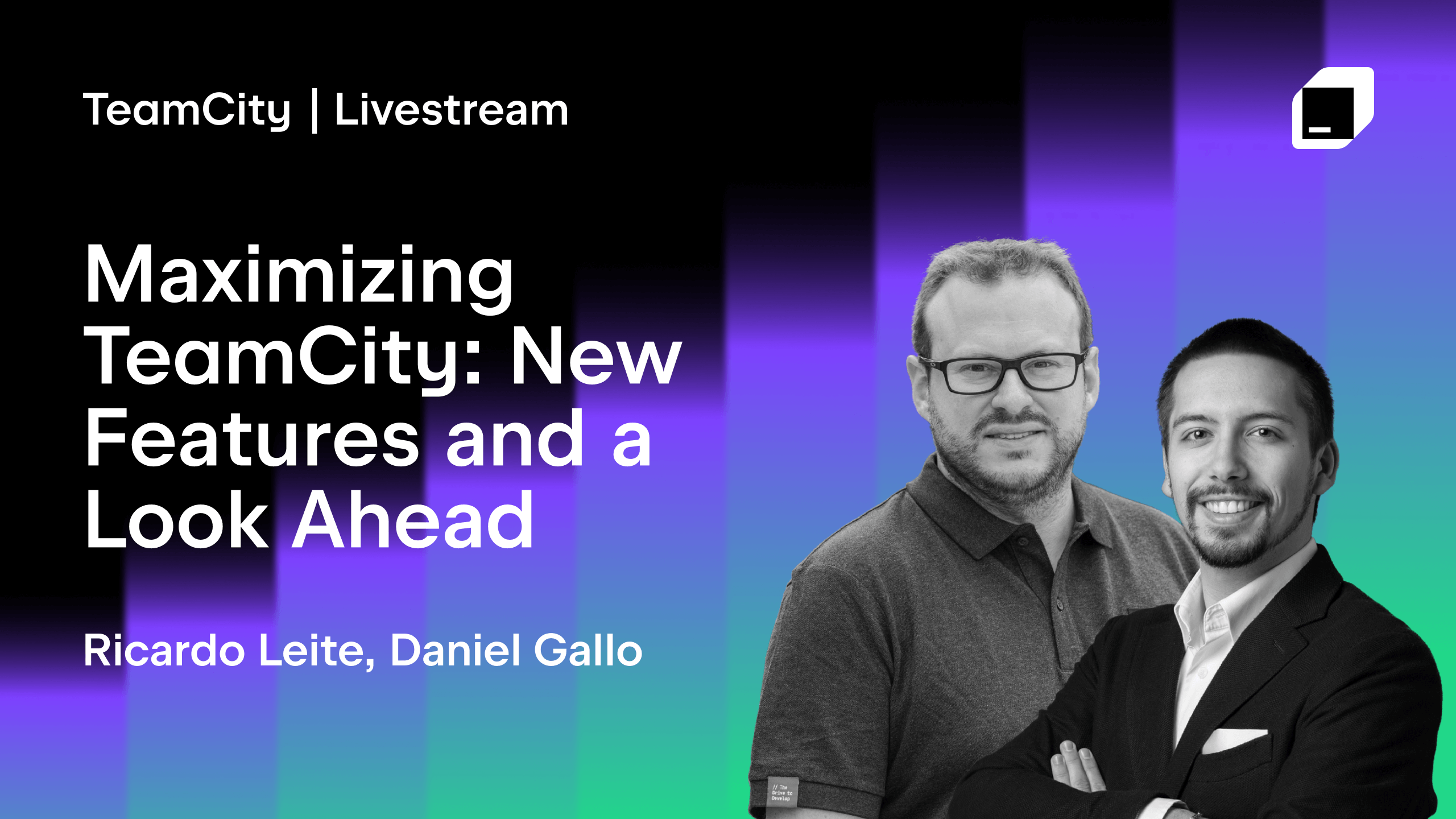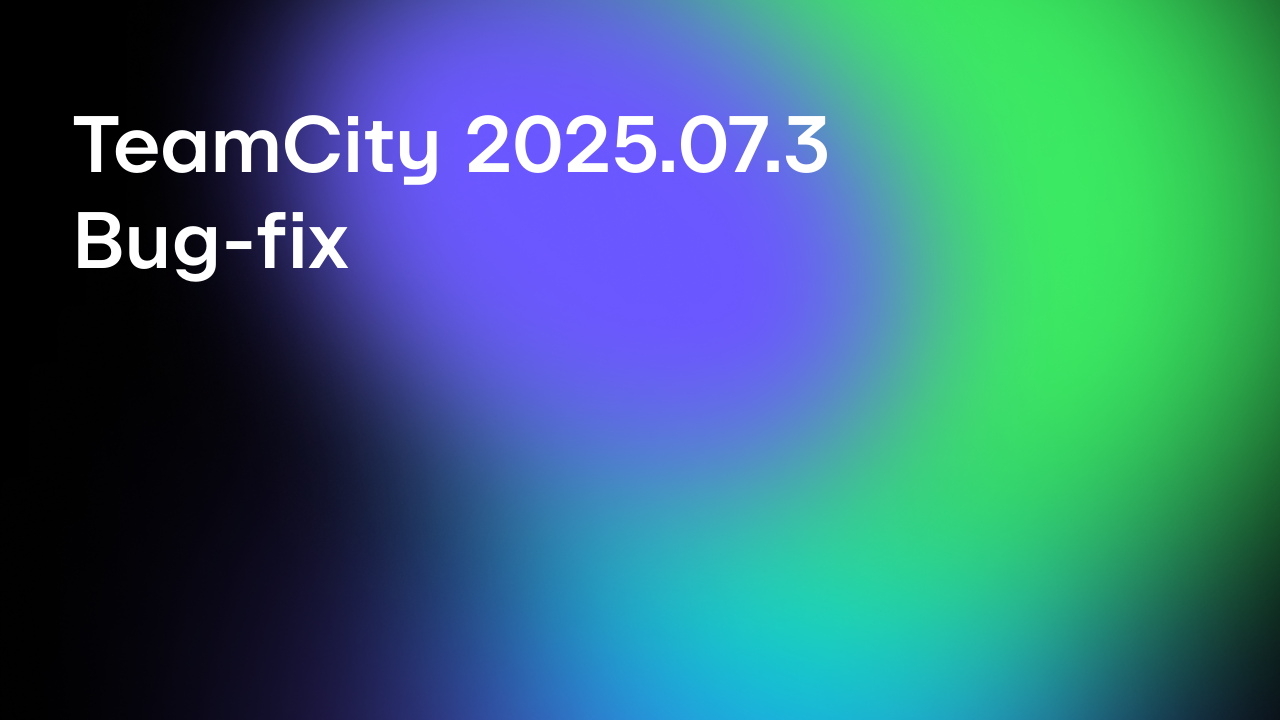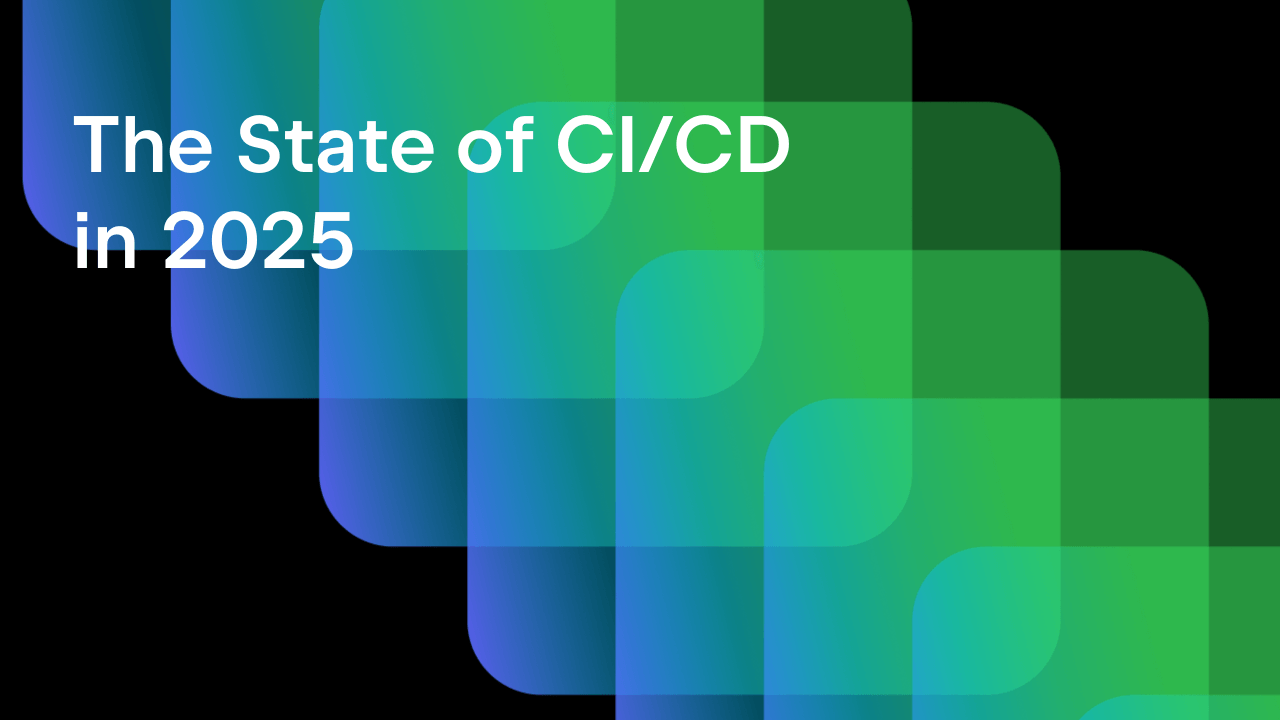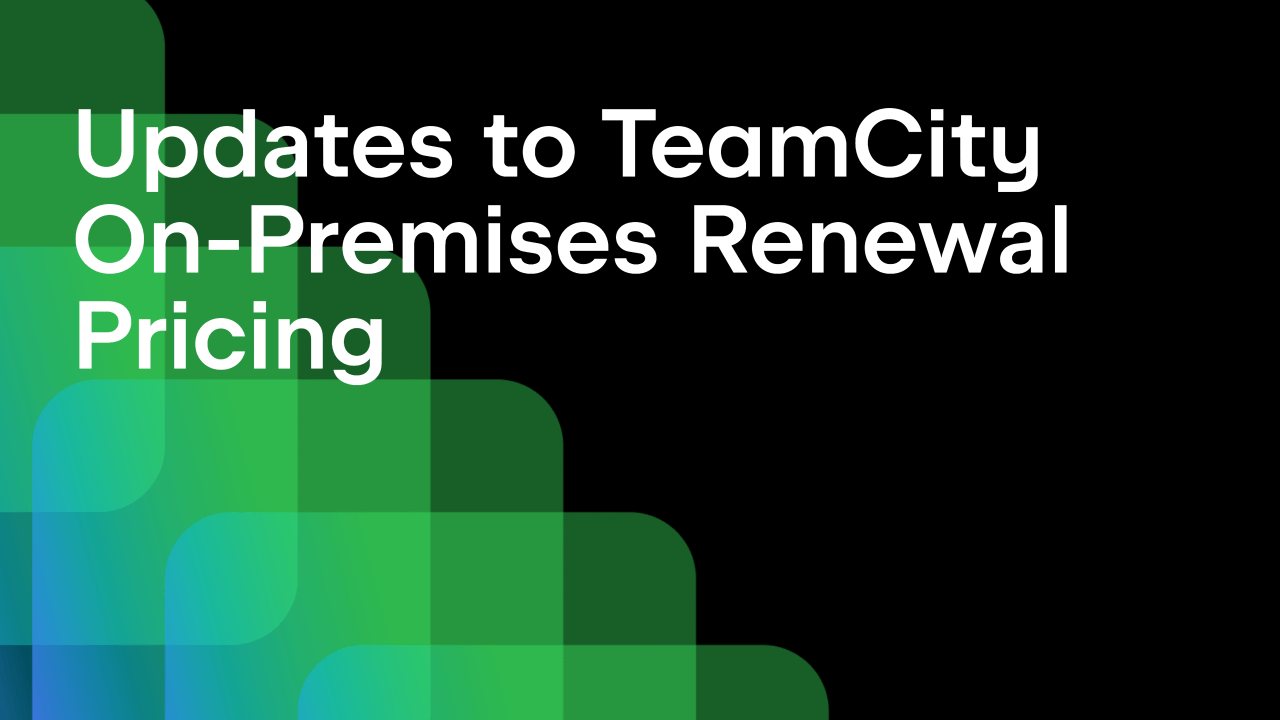TeamCity
Powerful CI/CD for DevOps-centric teams
[Livestream recording] Maximizing TeamCity: New Features in Action and a Look Ahead
In our latest livestream, TeamCity Solutions Engineers Ricardo Leite and Daniel Gallo hosted a livestream packed with exciting updates about TeamCity – from brand-new features already making life easier for CI/CD engineers, to a sneak peek at what’s next for 2026.
If you missed it or just want a quick refresher, here are the key takeaways.
What’s new: Top features from the latest releases
We started off by walking through some of the key new features added to TeamCity over the past year, such as the much-improved user interface, the introduction of pipelines and recipes, Kubernetes executor mode, and conditional dependencies in build chains.
All of these new features significantly improve the user experience, along with making it easier for teams to configure, visualize, and manage their CI/CD workflows.
Looking ahead: the 2026 roadmap
Ricardo and Daniel also shared what’s coming next, and there’s a lot to look forward to.
Key areas of focus for 2026
We will be focusing on these key areas throughout 2026:
- Performance in large environments – ensuring the loading of projects, builds, and test history is even more performant in the user interface. Plus optimizations on the server, such as the processing of the build queue, enabling a higher concurrency of builds, and improvements to the changes collecting process.
- UX improvements – improved user experience through pipelines, plus simplified project, build configuration, and VCS root creation screens.
- AI features – productivity enhancing features for users.
- Closer integration with JetBrains IDEs – for example, one-click creation of pipelines for specific use cases.
Roadmap
In the core platform:
- Dynamic build chains with even more flexibility.
- CD for mobile and game development.
- Instant build retries for failed steps.
- Faster Kotlin DSL compilation with the K2 compiler.
- Localized UI (starting with Chinese).
- Simplified multi-node setup and improved high availability.
In the cloud:
- A new Azure plugin for scalable agent management.
- An AWS image builder to prepackage dependencies for faster agent startup.
- Smarter auto-scaling, including pre-warmed agents ready to pick up builds instantly.
- Future support for Proxmox and Alibaba Cloud.
Pipelines: CI/CD made visual
One of the biggest highlights of the livestream was Pipelines – a new way to design and visualize your builds.
Currently in Early Access, Pipelines let you:
- Create and manage pipelines in a visual drag-and-drop editor.
- Configure everything in YAML, directly in the browser or your IDE.
- Set up branch-specific pipelines for different workflows.
- Keep full compatibility with your existing build chains.
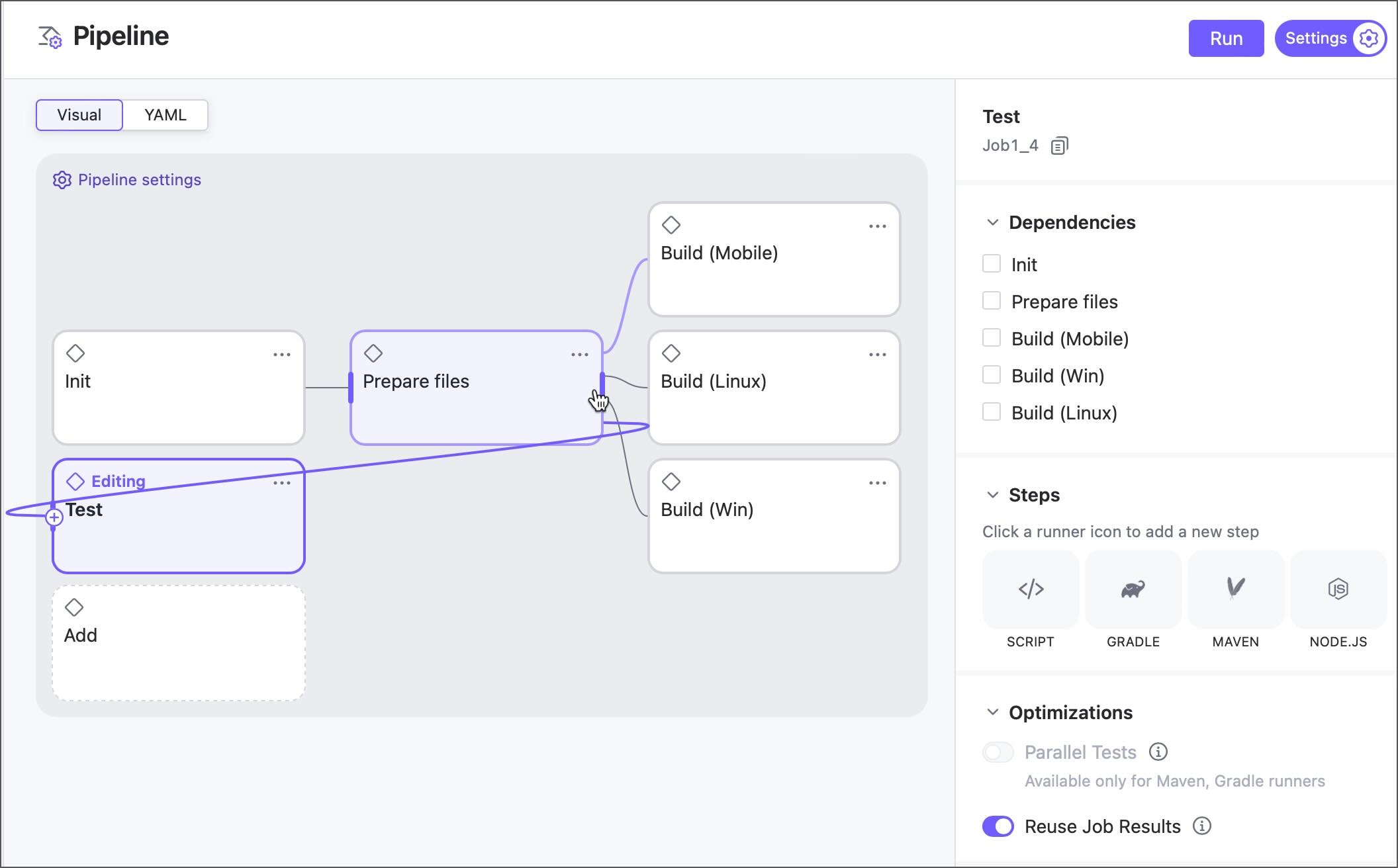
You’ll soon be able to link build chains and pipelines together, combining the best of both worlds. The full release is planned for early 2026, and it already looks like a game changer.
AI features in TeamCity
Exciting news: TeamCity is getting AI assistance, powered by the JetBrains AI platform.
AI Assistant
Built right into the UI, it helps you:
- Ask TeamCity setup or troubleshooting questions.
- Analyze build failures in real time.
- Get configuration guidance based on official documentation.
It’s like having a TeamCity expert available 24/7. Early Access will be coming in TeamCity 2025.11.
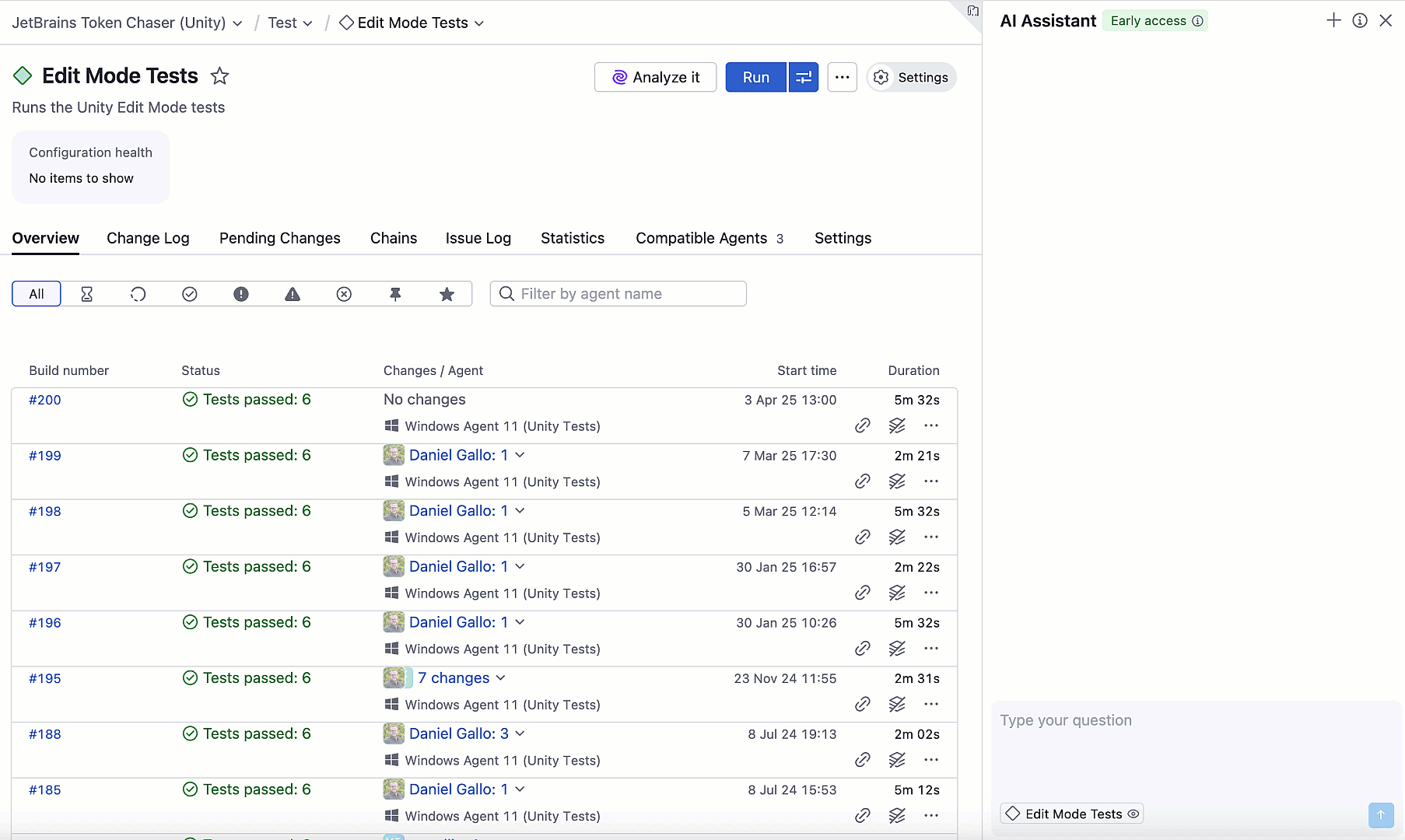
AI Build Analyzer
When a build fails, the AI Build Analyzer reads the logs and tells you why, complete with a summary, root cause, and possible fixes.
It’s already coming to TeamCity Cloud in early 2026, with on-prem support following soon after.
Other AI features
The team is already exploring:
- Automatic fixing of failed builds
- Natural language pipeline creation (“Create a pipeline that builds my app and deploys to staging”)
- Exposing TeamCity context to AI agents via MCP – this also includes support for AI Assistant in JetBrains IDEs
- AI agents for code review, refactoring, and testing
Our goal is to make CI/CD not just automated but intelligent.
How often we release TeamCity
TeamCity’s development cycle keeps getting faster and smoother. We now ship three major releases per year, along with monthly bug-fix updates.
Starting from 2026, we’ll also align our version numbering with other JetBrains products. So instead of 2025.11, you’ll see releases like TeamCity 2026.1, 2026.2, and so on.
Updates on licensing
As a quick reminder, starting November 3, 2025, new on-premises licenses will no longer include the 50% renewal discount, though existing licenses will retain the renewal discount.
If you are planning to buy new on-premises licenses, consider purchasing them before November 3, 2025 to lock in the discounted renewal rates.
More details can be found in our recent announcement.
Enhanced support plans
JetBrains offers enhanced Business and Enterprise Support plans, providing 24/7 coverage, guaranteed SLAs, private Slack channels, and dedicated technical account managers, all covering TeamCity and other JetBrains products. For more details, check out our support page.
Need a hand? We’ve got you covered
JetBrains Professional Services can help you:
- Migrate from other CI/CD systems.
- Optimize build chains and workflows.
- Develop custom TeamCity plugins for your internal tools.
Our team has handled hundreds of migrations, and we love helping customers design faster, more reliable pipelines. Feel free to reach out to us via the form on the website.
Subscribe to TeamCity Blog updates


